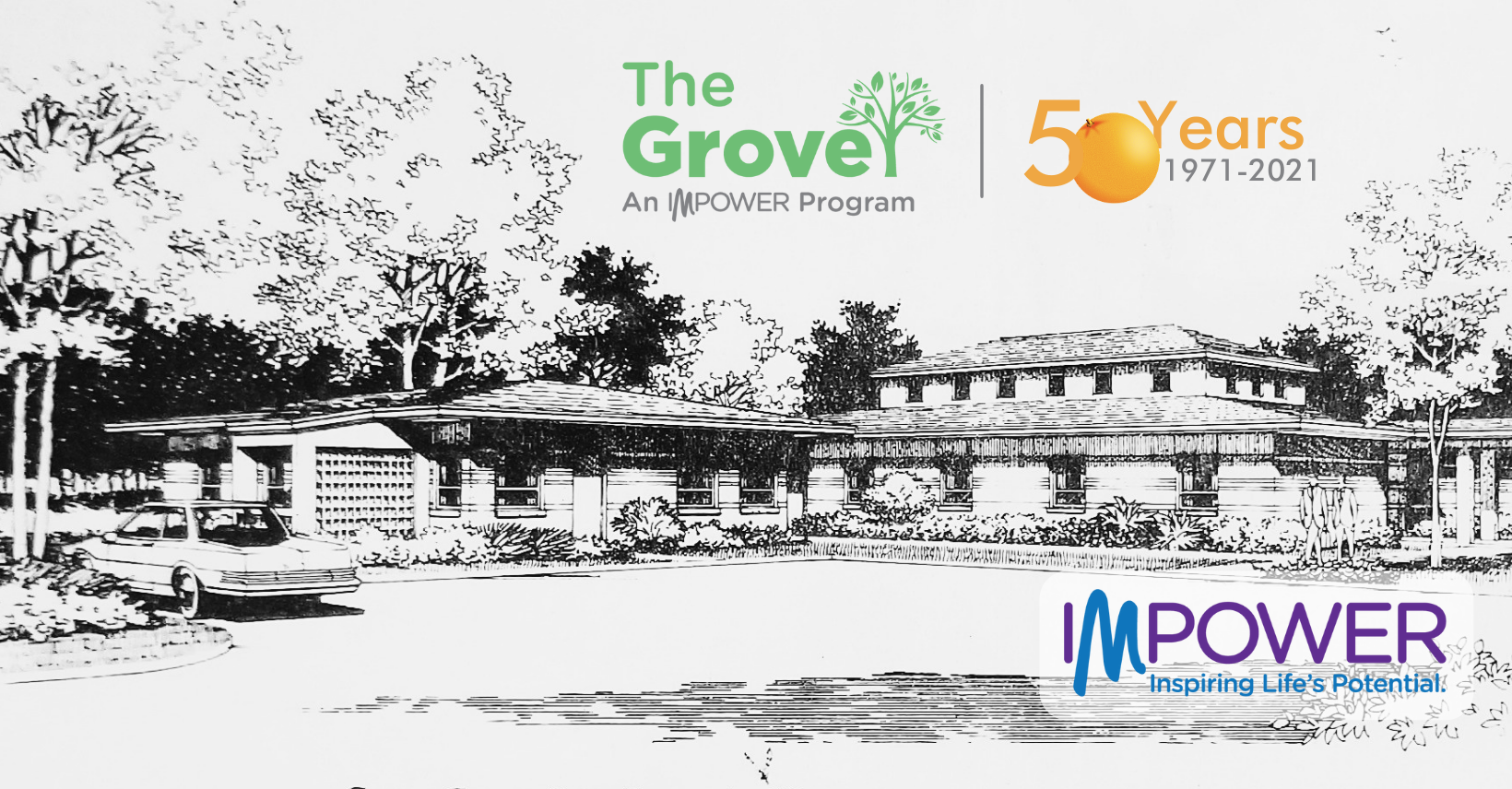Mental Health Blog | Oct. 25, 2021 | Jeremy Waller, MBA (Marketing and Community Outreach Manager – Behavioral Health)
Introduction
The Grove, IMPOWER’s residential substance abuse services program for youth ages 13-17, is kicking off its 50th anniversary this month. To celebrate this occasion the next two IMPOWER blog articles are going to be focused on telling the five decade history of The Grove. By the way, you can also make a donation to support the next 50 years for The Grove here.
The Grove at 50 – Yesterday’s Legacy, Tomorrow’s Vision – Part 1
Foundation – The 1970s
On October 26, 1971 Dr. Luiz Perez, a respected and influential cardiologist in Sanford, Florida led and brought together a group of concerned citizens and formed The Drug Action Committee of Seminole County (DACSC). The group believed that strengthening the family unit was the key to attacking the area’s growing substance abuse problem.
Out of this small seed grew what would become a thriving substance abuse treatment and counseling nonprofit, The Grove.
The Grove was formally established in 1974 with two programs, The Grove School and The Counseling Center. Both programs were located in Longwood, Florida.
The timing and location could not have been better as Longwood in the mid-70s and most of the surrounding areas experienced a season of unprecedented population growth due to The Walt Disney Company’s expanding influence in the region. The area was beginning to boom.
Yet, in spite of the area’s growth, many once formally prosperous communities such as Sanford and Midway, began to decline economically as jobs shifted from the region and new industries began to replace the areas citrus and celery farms. As a result youth drug overdoses and substance use grew to become great challenges not just these areas but across many impoverish areas of Seminole County.
The Grove was formally established in 1974 with two programs, The Grove School and The Counseling Center. Both programs were located in Longwood, Florida.
By the late-70s The Grove was already helping nearly 300 individuals and families annually, and while still in its formative years, it was beginning to become entrenched in the social fabric of the local community.
Grassroots fundraising in particular helped The Grove establish relationships and connections with the region and its citizens. Art exhibits, local jamborees, sales and auctions were part of the daily routine for The Grove in that time, with famed auto dealer Art Grindle often at the helm and Sam Thomas working on ways to involve local constituents in the proceedings.
By the end of the 70s, two things were becoming obvious. First, Seminole County youth and families needed help more than ever. Second, The Grove was quickly becoming most people’s answer to the problem of substance abuse. The stage was set for growth.
Growth – The 1980s
Things changed dramatically for The Grove in the next decade. In 1980, a local Roman Catholic priest named Charles O. Fritch took the helm as the organization’s new executive director, and The Grove would witness unpreceded positive change during his 6-year tenure.
The organization’s name was officially changed to The Grove Counseling Center, and the main location moved to Winter Springs. Financially, The Grove’s annual budget grew by over 300% from 1980 to 1986, to $400,000 and during the same time the staff grew to over 15 team members.
Moreover, day-treatment and foster-care programs, and criminal justice and outpatient services were added to The Grove’s program mix while programmatic funding expanded greatly and began to include State funding.
By the late 1980s The Grove’s services expanded to include residential treatment for adolescents and the organization was serving upwards of 700 people annually.
By the mid-80s The Grove had gone from being a grassroots nonprofit to an established agency.
At the end of 1986, Charles O. Fritch felt called to return to full-time ministry. Meanwhile, Larry Visser left West Lake Hospital and replaced Charles as The Grove’s new Executive Director.
Visser would lead The Grove for nearly 15 years, which remains the longest tenure by any President/CEO of the agency. Under his leadership, by the late 1980s The Grove’s services expanded to include residential treatment for adolescents and the organization was serving upwards of 700 people annually.
The 1980s was the decade when The Grove came into its own as an agency, however it was the 1990s, a time of programmatic innovation and increased agency branding, that would prove to be The Grove’s most fruitful decade yet.
–
Stay tuned next month as we continue The Grove at 50 – Yesterday’s Legacy, Tomorrow’s Vision with part 2!
Subscribe to our email list to be notified of future blog articles!
Recent Blog Articles
- Creating Change, One Person at a Time May 21, 2024
- 10 Tips to Reduce Stress April 4, 2024
- Tee Up for Good at “FORE The Village” to Benefit Homeless Youth February 13, 2024
- Driver’s Thoughts on Black History Month February 14, 2023
- Love Languages February 14, 2023
- Six Tips to Handle Holiday Stress December 13, 2022
- Financial IMPOWERment April 21, 2022
- The Grove at 50 – Yesterday’s Legacy, Tomorrow’s Vision [Part 1] October 25, 2021
- 4 Tips for Making Emotionally Sound Financial Decisions September 7, 2021
- The Importance of Routines August 2, 2021


